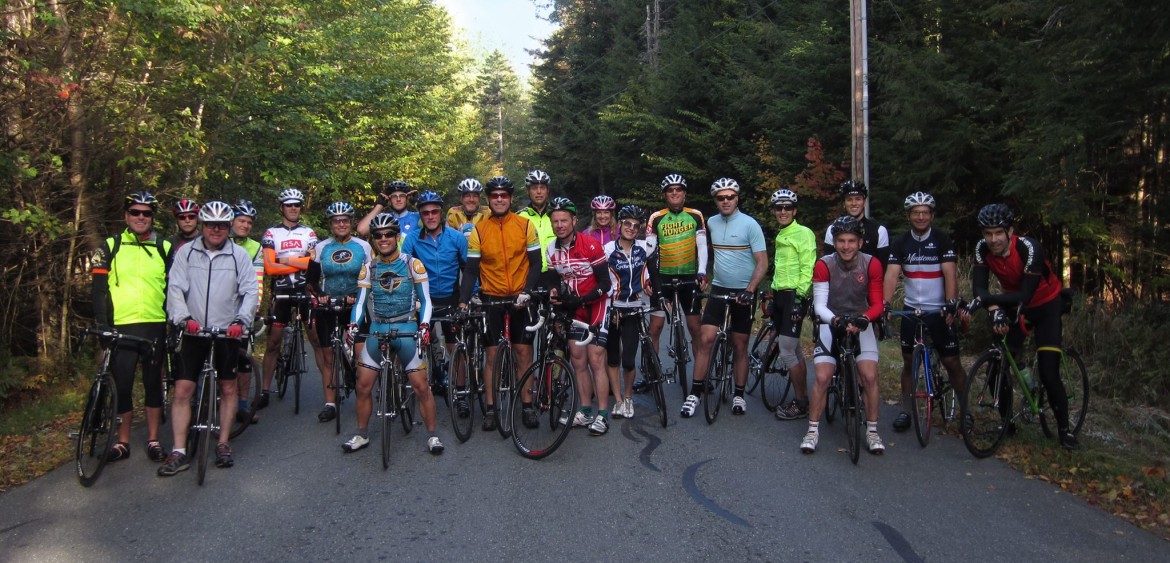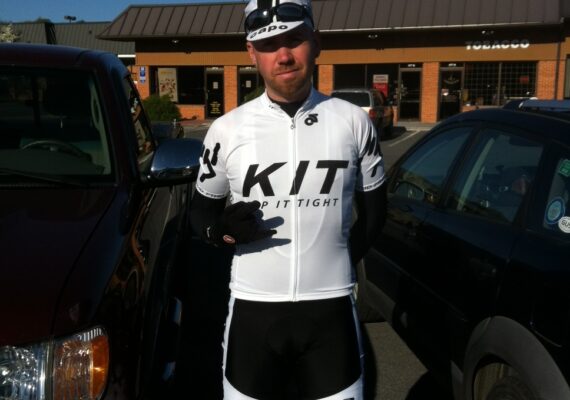Spring is here and we always need to hone our skills and basic safety. There are things you can do when riding solo or with one or two riders that are not smart or safe with larger groups.
The Ripper mantra – always – is an emphasis on safety. And a desire to improve whenever possible.
The following observations have been made during the past few years of riding. Take this as an opportunity to keep things safe, fun, and friendly, and not as a condemnation of any individual’s riding habits – we all have room for improvement, after all.
Generally, we should all strive to ride more smoothly, and we have some concrete suggestions below.
Look around
There are a lot of things happening out there – pedestrians, vehicular traffic, our group, and other cyclists. Don’t have your visual field locked on the smart looking Ripper kit and wheel in front of you. Look ahead and to the side and try to anticipate what could happen. Spotting potential dangers is the first step towards avoiding them.
Call it out
Riders in the front assume responsibility for the rest of us. If you see something that looks sketchy or its directional, call it out loudly and point if you can. Don’t worry – we’re going so fast you won’t possibly wake up anyone sleeping. If it is something that can be smoothly steered around for the group to follow without calling out or pointing that is the best approach, however.
Riders in the rear are responsible for issues approaching from the rear – cars/trucks – and alerting the group – please cascade this communication forward. If you hear it in the middle part of the group – and do not repeat – it is a very good bet – the front will NOT hear this information. Repeat information forward.
Obstacles in the road
Be smooth. You can ride straight through most potholes and road irregularities you’ve been avoiding without causing your front wheel to stop and launch you over the bars. If you don’t believe us, watch a video of Paris Roubaix on YouTube. Swerving suddenly around bumps causes a lot of side to side motion, which might lead to wheel overlap (see below) or startle riders behind you unnecessarily.
If you’re in the front or see an issue, obviously call / point out obstacles and slowly and gradually drift left or right of the obstacle. Following riders in groups know to follow the leader. Visually this can come from just subtle body weight shifts that smoothly move you from left or right depending on the issue.
In general, imagine you’re painting the road with your tires. After you’re done, the line should be as straight or smooth as possible. When you’re on your way to or from the ride, practice riding on the white line painted to the right of the road. If you look ahead down the road to where you want to go (versus directly down to the line) – you should be able to do it, easy-peasy.
Wheel overlap
Avoid overlapping your front wheel with the rear wheel of the rider in front of you – it is easy to fall if this happens, and you may bring mishap to those behind you as well. If you do touch a rear wheel relax as much as possible, ease off the pedals, and look at where you want to go. Tensing your body and panicking will just increase the chances of a fall.If you have time, practice touching wheels with a buddy at low speeds using platform pedals on a mountain, cyclocross, or hybrid bike on a soft, grassy surface.
There is an increased chance of touching wheels when the road transitions from downhill or flat to uphill. When this happens, the riders in front will slow, shortening the distance between riders, and compressing the group. Anticipate this by increasing the space between you and the rider in front by easing off the pedals prior to the uphill transition. If you must get out of the saddle, be aware that a sudden transition from a seated to a standing position will throw your bike backwards from the perspective of the rider behind you. Stand up gradually and try not to throw your bike backwards into the rider following you.
Keep an “escape route” in your head when trailing a rider – an air draft benefit is like a triangle behind the forward rider (sometimes it shifts left or right depending on strong wind directions) – so there is room within this triangle to move off center and be focused down the road with your vision (keeping the rear wheel/rider in your peripheral vision) without the loss of draft benefit and not be tightly focused only on the back of the rider or rear wheel right in front of you. You want to remain cool, smooth and not to tense up – keep your upper body lose as you’re better able to deal with whatever comes.
If you begin to overlap due to either braking up front or the accordion affect of a hard effort, stay smooth and glide with some space to the side. The key is to be slow and smooth as you drift to the side and equally smooth and predictable with your slow return to the draft of the wheel in front of you. Similarly, if you are going to reenter the line for any reason, make your intentions clear and move back into the line slowly and smoothly. It may require more energy, but it will be a lot safer.
Braking
Do it gradually, especially when riding in the middle of the group (see wheel overlap above). When coming up to a stop sign or intersection, indicate verbally or with a gesture that you’re slowing down to let others know. Remember that as it gets warmer we may have new riders not familiar with the route.
Descending
Descending can be one of the best parts of the ride, certainly a thrill, done well. But in groups – there are ways to increase the safety of the group. It is okay to draft, but be smart and as you approach connecting roads/blind drives on a downhill street (think Johnson Road!) – give a bike length or more to your fellow rider. Avoid passing if possible especially on downhill corners. The rider in front has the right away to move – you need the space to make adjustments to them. Lead riders as described above – need to be smooth and “painting the line” – but be safe, give some space.
Traffic Lights/Stop signs
Blasting through yellow and red lights and cutting in front of fellow Rippers is just not smart or safe for the group or yourself. Keep your loved ones in mind… Strava records are not worth jeopardizing the safety of you or others!
Clothing
Black outfits reduce your safety and the safety of the group. Just picture that person (probably an older family member) who is just a couple of years or a year away from not be able to drive due to their eye-site declining especially in low light. White, Light Blue/White, Bright Yellow, Red – are our your best colors – and ankle reflector wraps (now a state law at dusk/night riding!) – added to even black outfits – make you 100xs more safe – and the group too. Dress for the road, not the driveway.
Riding in the wet
Your bike cannot corner or brake on wet roads as well as dry ones. Slow it down and feather the brakes periodically to clear water from your rims. Watch out and avoid angling your rubber on road paint and railroad tracks – hit them as perpendicular as possible. Also be aware that when it is overcast cars will have a harder time seeing you – give them a wider berth if possible.
Feedback
If you have feedback or issues feel free to share them with a member of our safety committee below. We do not want to have a “reply all” forum on email. We can group share at various points any feedback. Also, if you are an experienced rider – we always encourage friendly direct communication following “an issue” with less experienced group riders or riders who are just not on their A game that day. Better to communicate than to not.
This is a very safe and smart riding group – and we look to continue to improve even as we grow.
Happy and Safe Ripper Riding Always,
Ripper Safety Squad: Bob Cahill, Albert Lew, JD Hale, Josh Fenollosa and Rich Batten
Massachusetts – bike and motorist laws: http://massbike.org/resourcesnew/bike-law/



Sorry, the comment form is closed at this time.